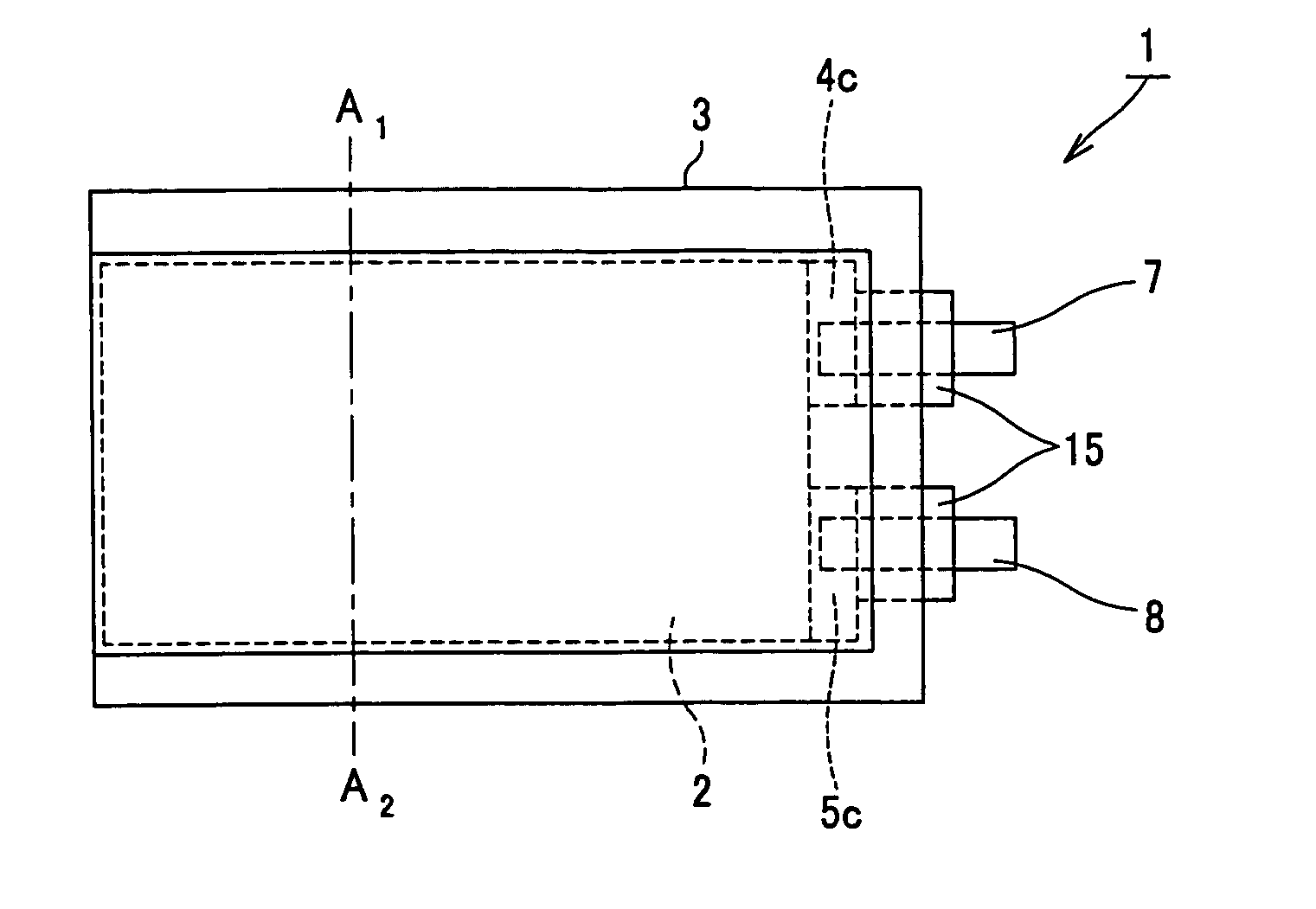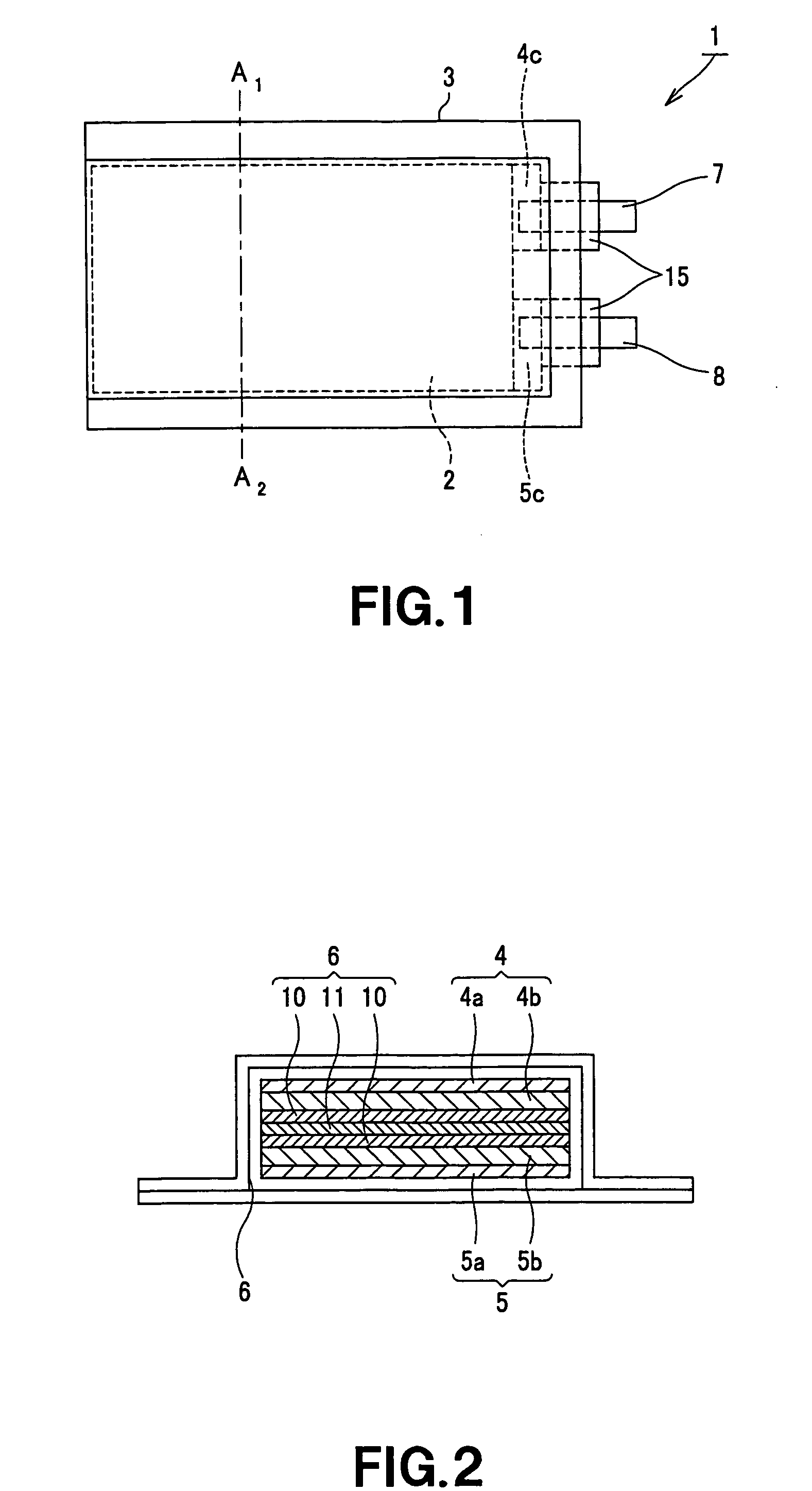Solid electrolyte, lithium-ion battery and method for producing lithium-ion battery
a lithium-ion battery and solid electrolyte technology, applied in sustainable manufacturing/processing, non-aqueous electrolyte cells, non-metal conductors, etc., can solve the problems of battery capacity decline, low degree of freedom in form, and the inability to achieve interfacial bonding between cathode active material and solid electrolyte to deteriorate an adhesion, so as to reduce the interfacial resistance between cathode and anod
- Summary
- Abstract
- Description
- Claims
- Application Information
AI Technical Summary
Benefits of technology
Problems solved by technology
Method used
Image
Examples
example 1
[0063] A cathode was formed as described below. Firstly, lithium composite oxide of LiCoO2 of 91 parts by weight as a cathode active material, graphite of 6 parts by weight as a conductive agent and polyvinylidene fluoride of 3 parts by weight as a binding agent were mixed together to have a cathode composite mixture. The cathode composite mixture was dissolved in 1-methyl-2-pyrrolidone as a solvent to obtain slurry type cathode application solution.
[0064] Then, the obtained cathode application solution was applied to a rectangular aluminum foil as a cathode current collector so as to have the application density of 1.41 mg / cm2. The cathode application solution was dried at 110° C., and compression-molded by a roll press machine to form the cathode having a cathode active material layer laminated on the cathode current collector. Then, the aluminum foil was cut into a rectangular form to manufacture a cathode lead. The cathode lead was attached to the cathode current collector unde...
PUM
| Property | Measurement | Unit |
|---|---|---|
| temperature | aaaaa | aaaaa |
| glass transition point | aaaaa | aaaaa |
| particle diameter | aaaaa | aaaaa |
Abstract
Description
Claims
Application Information
 Login to View More
Login to View More - R&D
- Intellectual Property
- Life Sciences
- Materials
- Tech Scout
- Unparalleled Data Quality
- Higher Quality Content
- 60% Fewer Hallucinations
Browse by: Latest US Patents, China's latest patents, Technical Efficacy Thesaurus, Application Domain, Technology Topic, Popular Technical Reports.
© 2025 PatSnap. All rights reserved.Legal|Privacy policy|Modern Slavery Act Transparency Statement|Sitemap|About US| Contact US: help@patsnap.com



